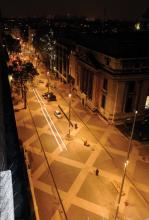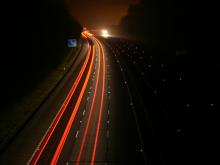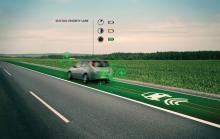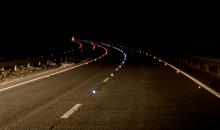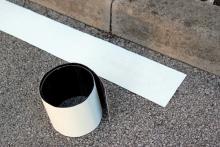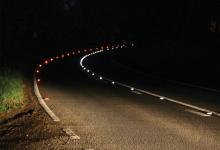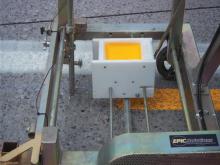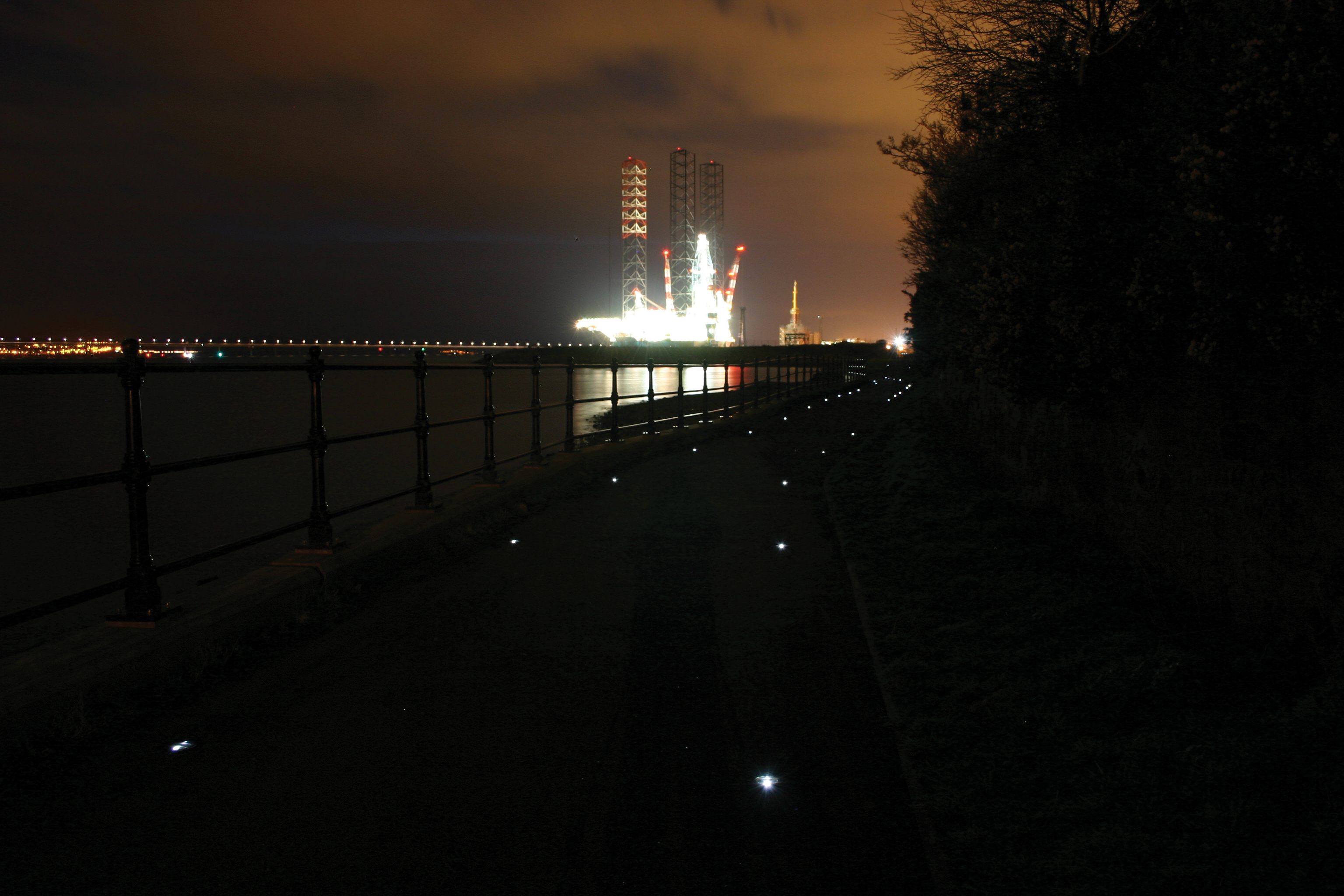
New lane control solutions from major roadmarking companies have been installed on highways across the world over recent months. Guy Woodford reports on some of them
CTG has been involved in numerous road stud installation projects on motorways and other road types in the UK and many other countries worldwide. Its UK installations include over 4,500 Astucia road studs on the M25 motorway between junction 6 and Clacket Lane Services, and over 7,000 studs between junctions 3 and 6 on the M40. The M20 has benefitted from the installation of 4,000 studs on the previously unlit section between junctions 8 and 9. In addition, over 21,000 studs have been installed across the A2 and A20 trunk routes in Kent. These roads, along with many others, have now benefitted from what CTG described as a “smart, safe sustainable product providing guidance to drivers via enhanced delineation during the hours of darkness”.
The Astucia SolarLite products offer a range of solar powered road studs to suit a wide variety of requirements. With both embedded and surface mounted products, they are said by CTG to be the only type approved active road stud in the UK. Unlike conventional road studs, or ‘cat’s eyes’, that rely on the reflection of the vehicle’s headlight beam hitting a small reflective surface on the cat’s eye, the SolarLite road studs use LEDs to actively project light at the driver. This provides a much more intense and effective visible delineation of the road. As the name suggests, the SolarLite road studs are solar powered so charge via natural daylight. Just four hours of charging time in the day stores an impressive 200 hours of light-emitting energy for night-time use.
Driving at night can be particularly hazardous. CTG says there are over five fatalities every day in the UK, and whilst only one third of journeys are made during the hours of darkness, it accounts for nearly half the fatal or serious injury accidents. Said by CTG to be primarily used for reducing the potential for accidents at known blackspots, especially in rural areas, where up to 70% reductions have been realised, the Astucia active studs are now becoming more familiar as an additional safety benefit in areas without street lighting; typically at locations where street lighting is either unavailable, being reduced, not cost effective or environmentally not possible.
Their recent installation on the M6 in Staffordshire is aimed at mitigating the risk of lorry drivers, who have reached this location on the long drive from Dover, falling asleep on this unlit section of motorway.
The flush profile of the SolarLite stud, at less than 4mm, is said to ensure they are unobtrusive to bicycle wheels making them ideal for cycle paths. They have been installed in and around the UK on many cycle paths in cities and counties such as Exeter, Bristol, Birmingham, Cambridgeshire, Peterborough, Edinburgh and Dundee. They have also been installed on cycle paths as far afield as Australia. CTG claims the SolarLite studs have proven instrumental in increasing the adoption of these cycle routes, allowing more people to participate in a healthier lifestyle whilst also increasing their safety along these paths.
Nick Lanigan, CTG managing director, said: “The installation of over 70,000 road studs is a result of our commitment to road user and cyclist safety and will motivate us to continue this growth as we move beyond this important milestone.”
RoadVision (RV) claim its new ‘Runway’ lane control safety system is based on the changes and advances in road building technology.
Runway is said by RV to incorporate a number of existing products currently approved and used in everyday road infrastructure.
Claiming to heed statistics showing that 60% of crashes are caused by lane departure, while also noting the impossibility of continuous audible rumble strips in lanes due to not all lanes having an unbroken white line, RV says Runway provides an unbroken continuous rumble strip even where there are no roadmarkings. Runway is said by RV to alert drivers as they leave their lane by an audible sound through their tyres, even on roads with a broken white line.
Re-marking roads and replacing road studs is, according to RV, a costly practice that needs to be done around every three years to stop them becoming ineffective. However, Runway sat they have roadmarkings that will outlast any current roadmarkings as it is protected from wear and tear from vehicles by the rumble strips.
This means the paint is said not to have direct contact with tyres, so will last longer. RV also says its road studs are manufactured into the 1m length so it cannot be damaged like a standalone stud, and will not react to weather conditions.
Installation of Runway is easy and quick. RV admits installation is not as quick as laying road paint, but point to it being a product that will outlast the lifetime of the road itself.
Runway has been manufactured to EN BS 1433 with a loading of D400. RV says it has been careful to produce the product to a 4.5cm depth, making it easily incorporated into the final layer of asphalt. This also means that it can easily be installed in existing roads, or roads that require resurfacing.
Said by RV to be usable as a natural barrier as roads are receiving the last layer of asphalt, Runway is also said to be a natural expansion joint between joins in the centre of the road. Commonly the white road marking is laid on the bitumen joint between the two parts of the newly laid road, moving and cracking as the bitumen contracts and expands in different weather conditions.
As the first side/lane of a road is being complete, the 1m channels of Runway are placed as a barrier and guide along the centre of the road/lane. The next side of the road is then easily completed as the channel acts as a reference and level for the second part of the road.
Once the road is complete, the top part of the product is placed in a simple click in movement which secures the product in place.
The LED is placed on both sides of the 1m strip. There are 2 LEDs either side. The LEDs are being used in different forms to reduce the expense to county councils using street lights.
RV claims the LEDs will have a lifetime of between 10-15 years and, with what RV says is its “easy click system”, they can be replaced in seconds.
The preformed thermoplastic product are making it easier for motorists to navigate the eight-lane freeway, connecting the south section of the A118 beltway with the Kirovsky and Moskovsky district junctions.
Meanwhile, 14 years after Geveko´s ViaTherm thermoplastic edge lines were applied at the opening of the Great Belt bridge in Denmark, LKF Contracting recently re-marked them. The bridge, which connects Funen and Sealand, is a busy traffic route with more than 30,000 vehicles using it every day.
Geveko said they were pleased with the longevity of the original ViaTherm edge lines, especially given the high volume of daily traffic on the Great Belt bridge.
In Lithuania,
The day was also scheduled to feature a number of lectures from leading roadmarkings industry figures. Frank Hofmann, of Hofmann, was due to talk about Path-dependent Airless Application; Eric Vandoolaeghe, director general of Francebased T1 Group Helios, was describing the development of VNTP ViziSpot markings in France; and Dr. Alexander Klein, of

